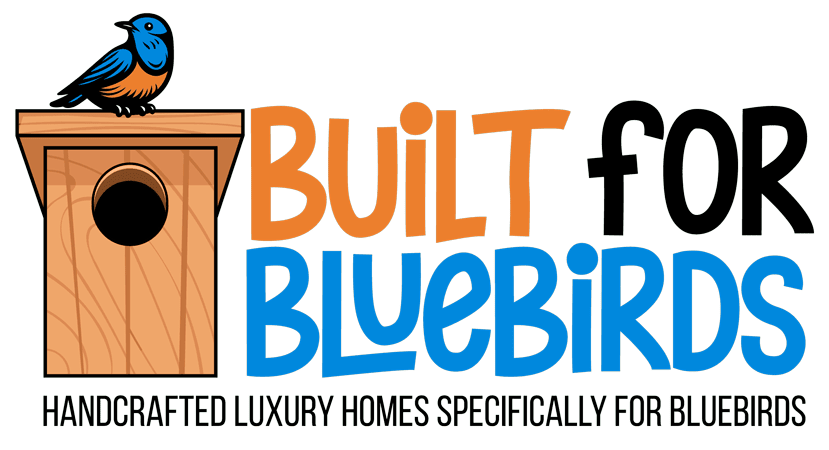
The Ultimate Guide to Maintaining Your Bluebird Nesting Box

Bluebirds bring beauty, charm, and natural pest control to any yard. Providing them with a well-built nesting box is just the first step; proper maintenance ensures they return year after year. Regular upkeep not only extends the life of your birdhouse but also protects bluebirds from predators, parasites, and harsh weather conditions. Here’s everything you need to know about maintaining your bluebird nesting box.
Why Maintenance Matters
Bluebirds are cavity nesters that rely on safe, secure shelters. Over time, their homes can become filled with debris, infested with parasites, or damaged by weather. Routine maintenance improves the chances of nesting success, keeps the birds safe, and encourages them to return season after season.
When to Clean Your Bluebird Box
The best time to clean your bluebird house is after each brood has fledged. Bluebirds typically have two to three broods per season, so check your nesting box:
- Early Spring: Before the first nesting pair arrives (February-March in warmer regions, April-May in cooler areas).
- Between Broods: After the fledglings leave, clean the box to prepare for the next nesting.
- End of Season: In late summer or early fall, do a final cleaning to prepare the box for winter.
Step-by-Step Cleaning Process
- Wear Gloves – Protect yourself from mites, bacteria, and other contaminants.
- Open the Box – Many well-designed bluebird houses have a hinged side or front panel for easy access.
- Remove Old Nesting Material – Discard used nests to prevent parasite buildup.
- Scrape Away Debris – Use a putty knife or stiff brush to remove droppings and stuck-on debris.
- Rinse with Water – A gentle spray of water helps clear out dust and dirt.
- Sanitize if Needed – If you notice mites, blowflies, or mold, use a mild solution of one part white vinegar to ten parts water. Avoid bleach or harsh chemicals.
- Let it Dry Completely – Air out the box before reassembling.
- Reattach and Secure – Make sure the box is sturdy and in good condition.
Seasonal Bluebird Box Maintenance
Spring Preparation
- Inspect for cracks, warping, or rot in the wood.
- Tighten any loose screws or nails.
- Ensure ventilation and drainage holes are clear.
- Install predator guards if needed.
- Apply a fresh coat of spar urethane for weatherproofing if left natural.
Summer Monitoring
- Check for signs of predators or pests (wasps, ants, snakes, raccoons, etc.).
- Make sure the box isn’t overheating—avoid placing it in direct sunlight without proper ventilation.
- Keep an eye out for aggressive competitors like house sparrows or starlings.
Fall & Winter Upkeep
- Remove all remaining debris after the last brood has fledged.
- Consider leaving the box up for winter roosting—bluebirds often use them to stay warm.
- If using for roosting, add some dried grass or pine needles for insulation.
- Store indoors if necessary, but reinstall by early spring.
Common Bluebird Box Issues & How to Fix Them
1. Predator Problems
- Solution: Install a metal hole guard to prevent squirrels and woodpeckers from enlarging the entrance.
- Solution: Add a baffle or cone below the box to deter climbing predators like snakes and raccoons.
2. Nest Parasitism
- Solution: Regular cleaning helps prevent infestations from mites, blowflies, and other harmful insects.
- Solution: If pests persist, sprinkle a light dusting of diatomaceous earth inside the box (but not directly on the nest).
3. House Sparrow Competition
- Solution: Remove sparrow nests immediately; they are an invasive species that outcompete bluebirds.
- Solution: Use a sparrow spooker (hanging strips above the box) to deter them without disturbing bluebirds.
4. Weather Damage
- Solution: Relocate the box to a more sheltered spot if wind or rain frequently damages it.
- Solution: Apply spar urethane to protect the wood from moisture.
Final Thoughts
Maintaining your bluebird nesting box doesn’t require much time, but it makes a world of difference for these beautiful birds. A well-kept box provides a safe haven for bluebirds to raise their young while allowing you to enjoy their presence in your backyard year after year. With just a little effort each season, you can ensure your bluebird house remains a welcoming home for generations to come!
Let’s Bring Bluebirds to Your Backyard
Whether you’re looking to enhance your yard, gift a meaningful item, or learn more about creating a bluebird-friendly space, I’m here to help. Fill out the form below, and I’ll get back to you as soon as possible to ensure your journey with bluebirds is off to a great start.
